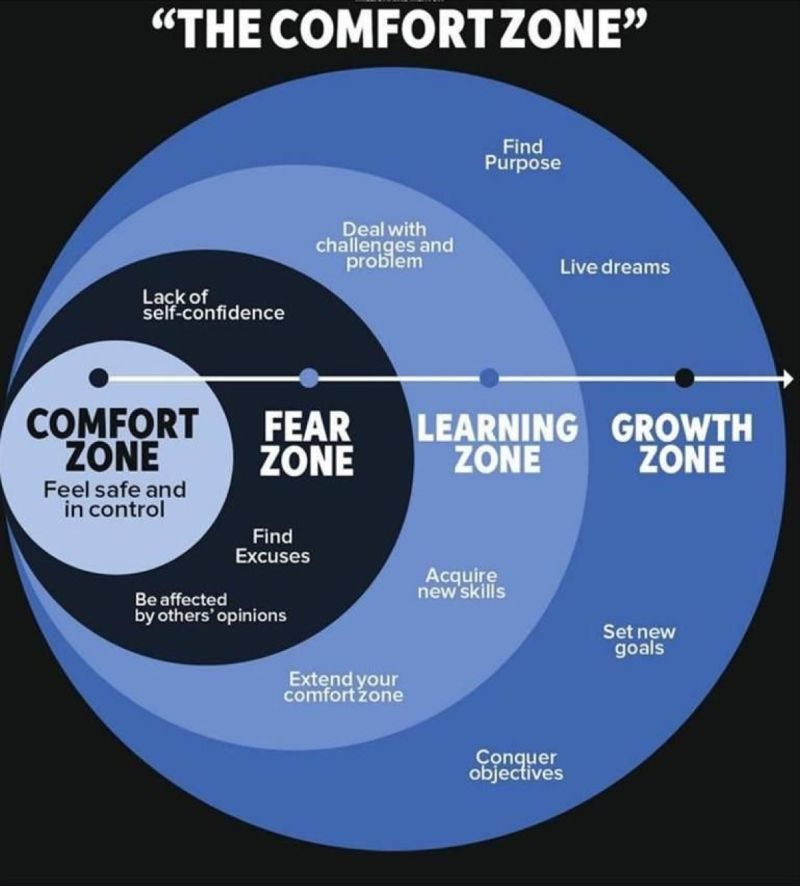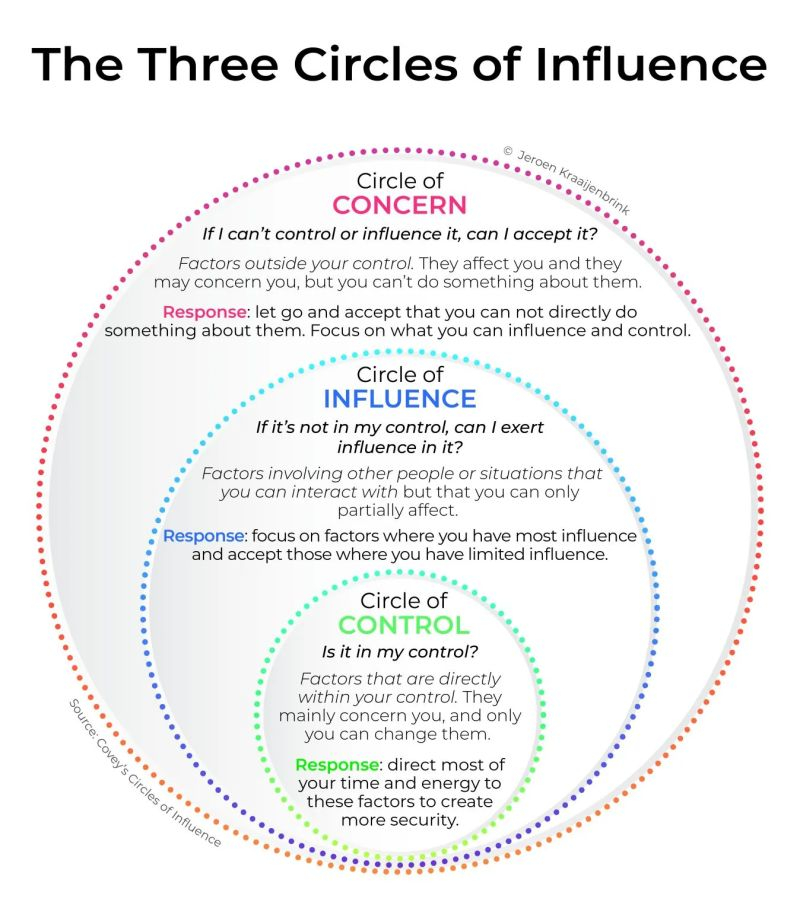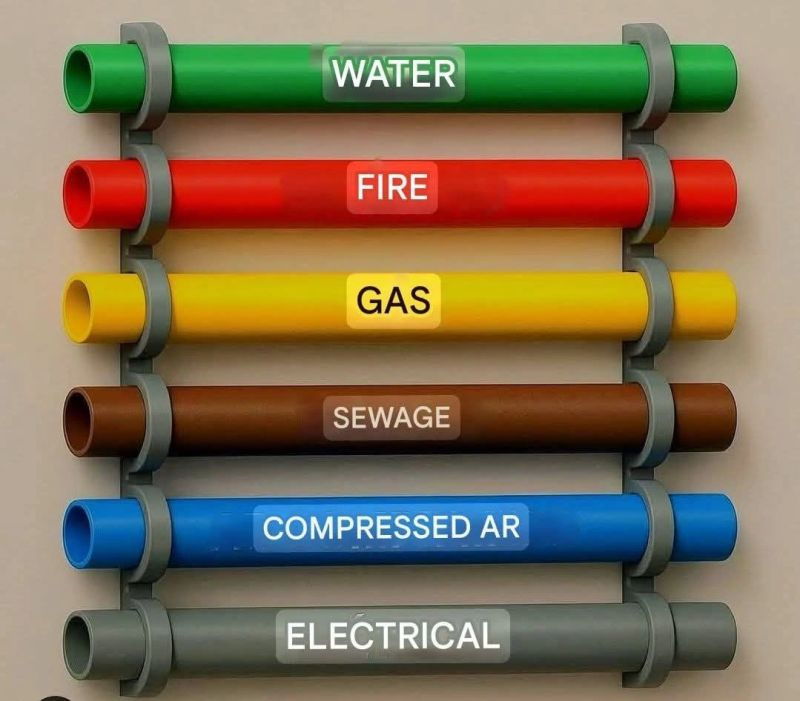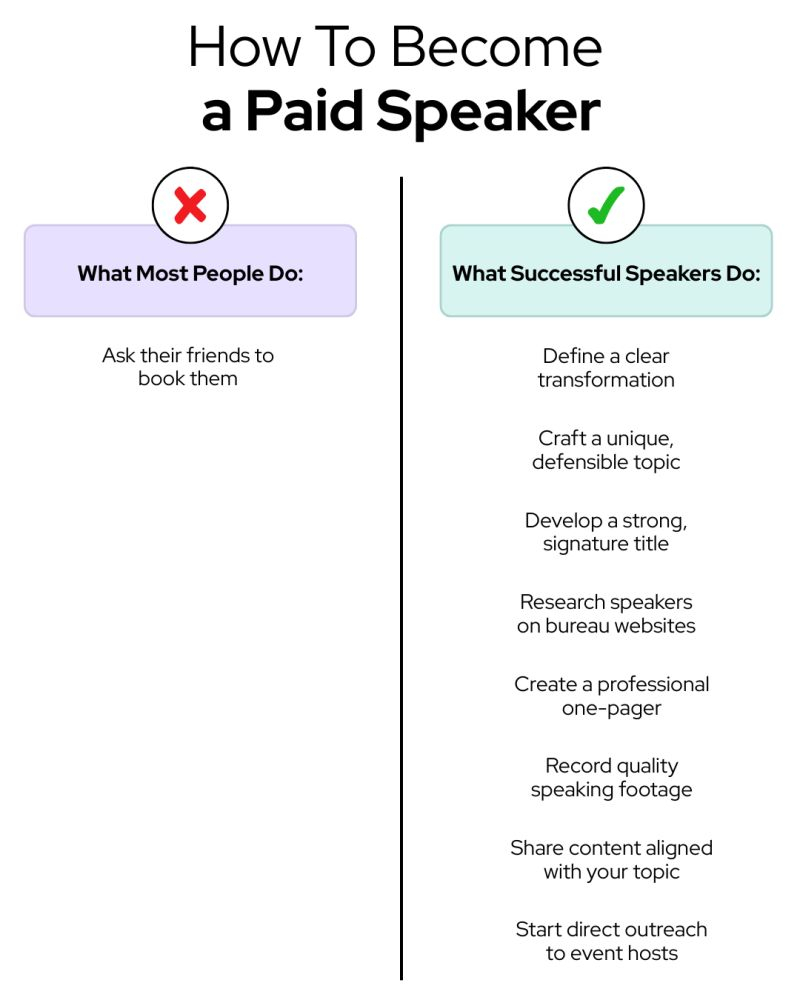"Do you ever that sense of fear in your stomach when you try something new?
Me too.
That fear means you’re learning. You’re growing. You’re expanding and moving out of your comfort zone.
That comfort zone feels safe because it’s what we know — it can also trap us in the status quo.
The imposter syndrome, fear, procrastination, insecurity means you are in the fear zone.
You cannot chase your dreams, grow, or live your purpose in the fear zone.
You just can’t.
What you want is on the other side of fear. It’s on the other side of your comfort zone.
It’s found in the learning zone.
It’s found in the growth zone.
The only way to get out of the fear zone is action. It’s doing. It’s creating daily habits. It’s setting routines. It’s becoming.
It’s doing and moving forward even when it scares you.
Lastly, your body doesn’t know the difference between fear and excitement.
Next time you get that feeling in your stomach, tell yourself that it is excitement.
You are excited to apply to that job. You are excited to speak in public. You are excited to ask that person out.
And sometimes, you just need to do it anyways.
Do it afraid. Do it scared. Do it while your hands tremble.
I promise you, the next time you’ll be a little bit less fearful.
And then it becomes habit and finally who you are.
You got this, Raindrops!
Who’s entering the learning and growing zone with me? Let me know in the comments!
Me too.
That fear means you’re learning. You’re growing. You’re expanding and moving out of your comfort zone.
That comfort zone feels safe because it’s what we know — it can also trap us in the status quo.
The imposter syndrome, fear, procrastination, insecurity means you are in the fear zone.
You cannot chase your dreams, grow, or live your purpose in the fear zone.
You just can’t.
What you want is on the other side of fear. It’s on the other side of your comfort zone.
It’s found in the learning zone.
It’s found in the growth zone.
The only way to get out of the fear zone is action. It’s doing. It’s creating daily habits. It’s setting routines. It’s becoming.
It’s doing and moving forward even when it scares you.
Lastly, your body doesn’t know the difference between fear and excitement.
Next time you get that feeling in your stomach, tell yourself that it is excitement.
You are excited to apply to that job. You are excited to speak in public. You are excited to ask that person out.
And sometimes, you just need to do it anyways.
Do it afraid. Do it scared. Do it while your hands tremble.
I promise you, the next time you’ll be a little bit less fearful.
And then it becomes habit and finally who you are.
You got this, Raindrops!
Who’s entering the learning and growing zone with me? Let me know in the comments!
"Do you ever that sense of fear in your stomach when you try something new?
Me too.
That fear means you’re learning. You’re growing. You’re expanding and moving out of your comfort zone.
That comfort zone feels safe because it’s what we know — it can also trap us in the status quo.
The imposter syndrome, fear, procrastination, insecurity means you are in the fear zone.
You cannot chase your dreams, grow, or live your purpose in the fear zone.
You just can’t.
What you want is on the other side of fear. It’s on the other side of your comfort zone.
It’s found in the learning zone.
It’s found in the growth zone.
The only way to get out of the fear zone is action. It’s doing. It’s creating daily habits. It’s setting routines. It’s becoming.
It’s doing and moving forward even when it scares you.
Lastly, your body doesn’t know the difference between fear and excitement.
Next time you get that feeling in your stomach, tell yourself that it is excitement.
You are excited to apply to that job. You are excited to speak in public. You are excited to ask that person out.
And sometimes, you just need to do it anyways.
Do it afraid. Do it scared. Do it while your hands tremble.
I promise you, the next time you’ll be a little bit less fearful.
And then it becomes habit and finally who you are.
You got this, Raindrops!
Who’s entering the learning and growing zone with me? Let me know in the comments!
0 Commentarii
0 Distribuiri
277 Views
0 previzualizare








